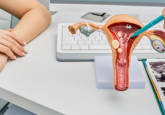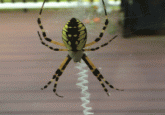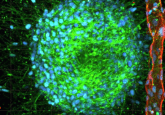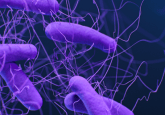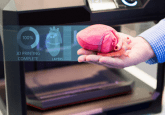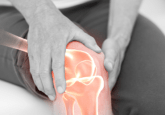Biology powers technology
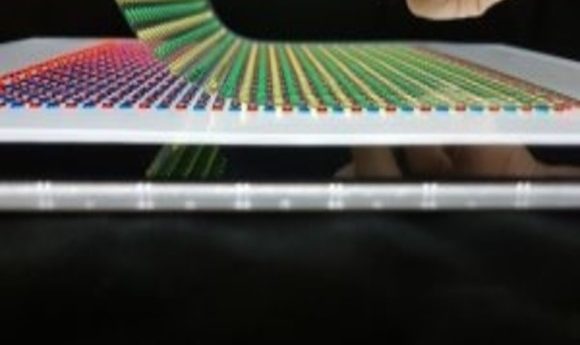
Researchers have developed an electric eel inspired power source from stacks of hydrogels. Will these bio-inspired batteries find medical applications in the future?
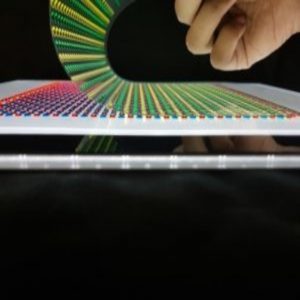
Printed arrays of hydrogels that generate 110 V when overlaid upon one another.
Credit: Anirvan Guha and Thomas Schroeder, University of Freibourg
In 1800, naturalist Alexander von Humboldt witnessed an unconventional fishing ritual in South America. The fishermen first sent horses into the water before entering themselves to catch electric eels. Years later, researchers figured that the fishermen used the horses as bait to ensure their own safety since electric eels use internal ionic gradients to generate high voltages to ward off predators and to capture prey.
“The electric eel produces up to 600 V of potential and up to 1A of current,” said Anirvan Guha from the University of Fribourg in Switzerland. “The normal line voltage in the US is 110 V, so 6 times that is quite large.”
Inspired to mimic this biological process in technological applications, Guha and his team developed a power source generating up to 110 V electricity from stacked hydrogels [1]. Guha presented their work at the Biophysical Society meeting in San Francisco [2].
“This work is a great demonstration of how to create large arrays of biomimetic voltage sources in much the same way electrocytes are stacked in the electric organ of the electric eel,” said David LaVan, a biomaterials expert at the National Institute of Standards and Technology (NIST), who was not involved in this study.
The team used a reverse electrodialysis system occasionally used in power plants to achieve this feat. “We thought if we could miniaturize this and make it out of hydrogels, then we would have some flexibility in terms of how we could create many different implementations of this system and play with those to see if we could get very large amounts of power,” said Guha.
The system comprised a high salt compartment and a low salt compartment separated by a membrane that allowed only one charge to pass though, thus creating a gradient of ions. By connecting stacks of gels with alternating membranes that allowed positive and negative ions to pass through in series, the researchers generated 110 V from their power source.
Despite the high voltage generated in the system, the current passing through the stacked gels was small because of the limited contact area between the gels. The team overcame this issue and achieved high currents using origami folds to increase the contact area between the gels.
In the future, the researchers envision using such biocompatible gels to power pacemakers, disease tracking sensors, or prosthetic devices. However, their current system is preliminary and has not been developed in this direction yet.
